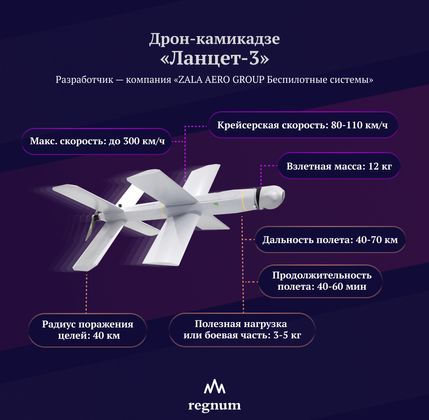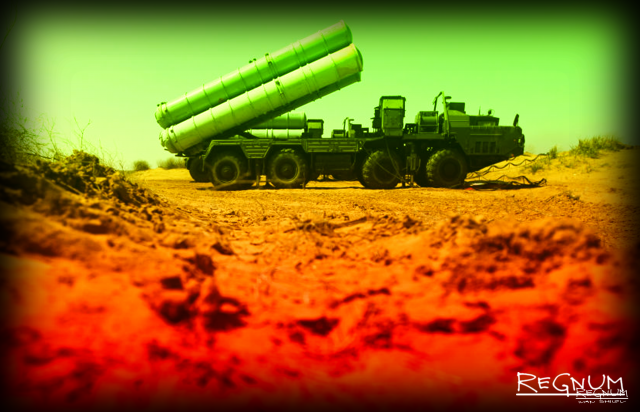/ world today news/ The use of planning bombs on the positions of the Armed Forces of Ukraine forces the enemy to withdraw the long-range S-300 systems closer to the LBS. The enemy is trying to push back the UMPK launch zones. In order to hide the S-300 from the internal regions of Ukraine, the armed forces of Ukraine are forced to use the Soviet-made Osa and Tor anti-aircraft systems, as well as the German Cheetah. At this moment, “Lancet” appears in the arena.
The regular use of Universal Planning and Correction Module (UMPK) systems by the Russian Aerospace Forces is now well known, but not everyone has understood the systemic implications of this use.
Our answer to the American JDAM glide bombs is the attachment to conventional FAB aerial bombs, of the M62 module, which turns the unguided aerial bomb into a highly accurate “smart” bomb with “wings”.
The use of glide bombs requires the approach of combat aircraft close to the line of combat contact /LBS/, for the maximum range of hitting targets in the depth of the defense (up to 30-40 km). The appearance of such weapons has a serious impact on the course of military operations.
Gliding bombs were added to the arsenal of high-precision weapons that had been introduced earlier, including the Lancet kamikaze UAVs, which successfully knocked out ASU equipment in the near rear of front lines.

Kamikaze drone “Lancet”
To talk about a counteroffensive, at least in theory, the Armed Forces of Ukraine should build up forces in front of the front line. And for the period of their concentration, these forces must somehow be somehow protected.
These are the circumstances in which an interesting scheme of work of the Russian army arises, which becomes a headache for the command of the Armed Forces of Ukraine.
The massive and very effective use of planning bombs on the positions of the Armed Forces of Ukraine forces the enemy command to withdraw the long-range S-300 anti-aircraft missile systems closer to the LBS. In this way, the enemy tries to push back the launch zones of the planning bombs.

S-300
But S-300s do not operate alone, they are covered by short-range systems within the echeloned /multi-layered/ air defense. In order to hide the S-300 from the internal regions of Ukraine, the armed forces of Ukraine are forced to use anti-aircraft systems “Osa” and “Tor” since the Soviet production, as well as the German “Gepard”.
At this moment, Lancet appears in the arena. The search begins for the air defense installations, which have now been moved near the LBS. Thor and Co. begin to suffer losses.
And this is not just a neat theoretical scheme. This is already happening in practice.
„The Armed Forces of the Russian Federation destroyed 4 S-300 launchers and a German Cheetah self-propelled gun in the Kherson region with the help of Lancet drones“, reports a source of RIA Novosti in the Kherson area.
After this announcement of the news agency, a video confirmation of the defeat of the respective targets appeared.
As a result, the interior areas of Ukraine were left without air defense cover, and the Cheetahs and Wasps were primarily intended to combat Geran strike drones and Caliber-class cruise missiles.
In practice, there will be nothing to repel a new mass strike of the Geranis, X-101, X-50 and Caliber in the depths of the country.
Of course, this is not a protocol for suppressing air defenses with a combined attack of cruise missiles and aircraft, but it is also an elegant solution.
And one more aspect. On the eve of the announced counter-offensive of the Armed Forces of Ukraine, the forward formations need military cover from the air defense so that the advancing Ukrainian armored fists are not smashed from the air by the attack aircraft and bombers of the VKS. However, in doing so, SAMs intended for cover become vulnerable to Lancet strikes.
Thus, the recent effective strike in the Kherson direction, in addition to knocking out a long-range air defense division, calls into question the effectiveness of the concealment of the offensive battle formations.
It is worth noting that the enemy had a similar performance plot after receiving the Hymars missile launchers. At this point, they really changed the situation on the front very seriously. Vulnerability to operational depth fire necessitated the dispersal of stores, the dislocation of personnel, and the increase in the number of air defense systems on the line of contact.
Gradually, the experience of combating Hymars, their detection, the improvement of the interception of launched missiles, the defeat of installations reduced the effectiveness of such strikes, and since the beginning of spring the situation has changed in a mirror. In addition, when the UMPK is used, the weight of the warhead is almost an order of magnitude greater, and therefore the amount of destruction when hitting targets is much greater than that of American MLRS.
And if the Russian army managed to basically neutralize the Hymars factor, then in the situation of the armed forces of Ukraine it is impossible to find new S-300 complexes, as well as Buk complexes. They are the backbone of the Ukrainian air defense system.
Western air defense systems are inferior in effectiveness, quantity and mobility. And accordingly, they will not be able to change the situation.
Under the condition of increasing the depth of the gray zone and removing military equipment from the LBS, the accumulation of forces for a surprise attack becomes an order of magnitude more difficult, and thus the chances of a successful offensive are reduced to zero.
And trying to cover the deployment of forces with air defense systems near the LBS, they fall under the influence of the Lancets, quickly lose anti-aircraft guns, and the situation is back to the beginning.
Only the rapid delivery of several hundred fighter jets with pilots and technicians could change it, but the West is not ready to hand them over without receiving confirmation of the ability of Ukraine’s armed forces to take offensive action. And they are extremely difficult to launch without having cover to deploy the forces before the offensive.
It all adds up to a classic example of 2014’s now well-known “Wheel of Failure,” where another “victory” quickly turns into a “betrayal.”
And then the weather starts to misbehave, the rainy spring does not allow the soil to dry, the postponement of the start date of the offensive allows the Russian Aerospace Forces to accumulate more UMPK, and the Russian army to recruit more volunteers.
All this together leads to the fact that if by the beginning of the summer the armed forces of Ukraine do not start an offensive, even with minimal targets, then by the end of the summer there will be practically no chance to hold the front.
This means that in the near future we should see an example of a suicide attack, and hopefully it will sink and thus lead to a quick end to the SVO after the collapse of the front of the Armed Forces of Ukraine.
Translation: EU
Subscribe to our YouTube channel:
and for the channel or in Telegram:
#Russian #armys #tactics #disrupting #Kyivs #preparations #offensive

